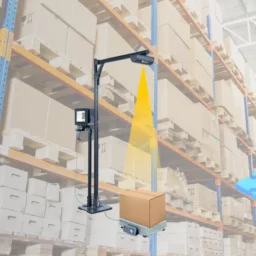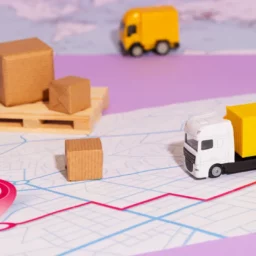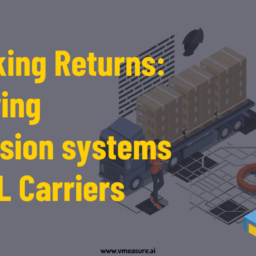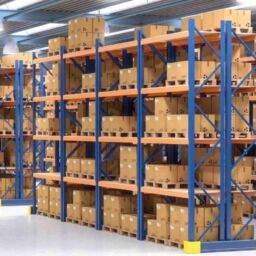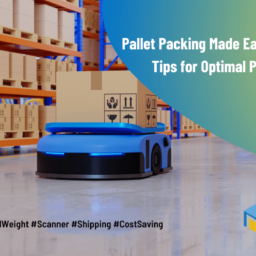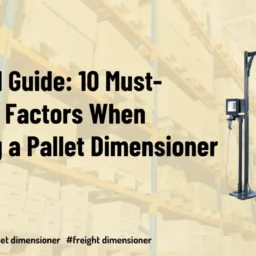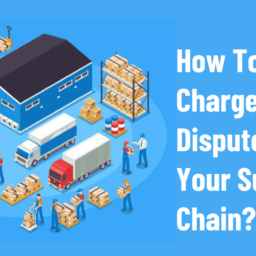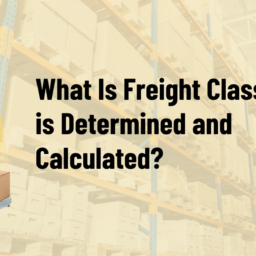
Introduction
Shipping parcels is a thriving industry. The growth of it depends on online shoppers. As per Statistica report, in 2022, people around the world sent more than 161 billion packages. In less than six years, it’s predicted that this number will increase to 256 billion packages by 2027, growing at a rate of 59 percent each year.
In concisely, the secret to getting your online order to your doorstep on time and safely is small parcel shipping.
In this blog post, let’s learn in detail how parcel shipping works, its characteristics, and to overcome the major challenges in parcel shipping.
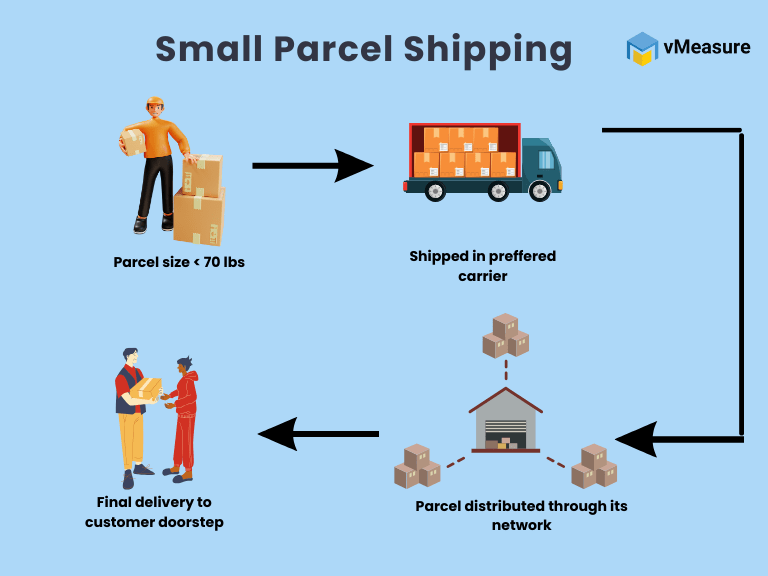
How Small Parcel Shipping Works?
As e-commerce continues to grow, businesses are shifting from exclusively delivering palletized goods to brick-and-mortar stores to transporting mixed shipments of small parcels like lipsticks, AirPods, shampoo bottle etc., in trucks or trailers to direct customers.
Small parcel shipping involves transporting individual packages, commonly weighing under 70 pounds (32 kg) and possessing dimensions manageable by a single person. Using small parcel shipping, you gather your finished products and place them in a box, envelope, or poly mailer. Afterward, you pass it on to the shipping carrier you prefer. The carrier then moves it through its networks, managing the final delivery to your customer’s doorstep. The rates you receive may vary depending on the type of package you’re sending and the carrier you choose, with some carriers potentially offering more cost-effective options.
Modern technology such as parceling dimensioning systems, automated labeling, and tracking systems, adds a layer of precision, ensuring each parcel arrives at its destination swiftly and intact.
Small Parcel Vs Freight
Now you might be wondering, what is freight? Let’s distinguish between small parcels and freight that aims to optimize logistics strategies.
Size Matters
Small parcel shipping usually deals with lighter packages, perfect for sending items to individual consumers. On the flip side, freight shipping is designed for bigger and bulkier items.
Speed and Cost Factors
When it comes to small parcel shipping, you can expect quicker delivery times, making it a budget-friendly option for businesses managing lots of smaller orders. On the other hand, while freight shipping is efficient for larger quantities, it might be pricier and take a bit longer for your items to reach their destination.
Which Items Can Classify Under Small Parcel?
Understand the types of items that can be classified under small parcel shipping.
- The product should weigh less than 70 pounds.
- It should have a low dimensional weight.
- The delivery truck should have the capacity to accommodate 50 to 100 parcels.
- Delivery trucks or vans make several stops throughout the day to deliver packages directly to customers’ doors.
What are the Common Challenges in Small Parcel Shipping and The Best Practices to Overcome Them?
Though there is a growing demand in the small parcel shipping industry, it comes with many challenges from order packing to last-mile delivery
Dimensional Weight Pricing
Problem:
Many carriers use dimensional weight pricing, which considers the size of the package in addition to its weight. This can lead to higher shipping costs for businesses sending lightweight but large items.
Solution:
Using parcel dimensioning systems like vMeasure Parcel Ultima provides precise package dimensions automatically allowing the carrier to calculate dim weight accurately. This ensures that shipping costs are based on the dim weight of the package, preventing overcharges for lightweight but large items.
Order Fulfillment Speed
Problem:
Small parcel shipping is known for its speed, but meeting customer expectations for same-day or next-day delivery poses a challenge.
Solution:
Efficient warehouse management is at the core of speedy order fulfillment. Implementing organized storage systems, utilizing picking technologies, and optimizing warehouse layouts contribute to a seamless process. This makes sure that products can be quickly located and dispatched for shipping.
By automating Warehouse Management Software (WMS) with a parcel dimensioning system will simply order processing workflows to minimize delays.
Inventory Management
Problem:
Businesses with diverse product ranges faces high challenges on managing inventory. Incorrect inventory data can result in fulfillment errors and delayed shipments which can also lead to missed sales and dissatisfied customers.
Solution:
Integrating advanced inventory systems with cloud-based solutions provides real-time data visibility into inventory levels and reduces the likelihood of errors. This significantly improves accuracy and streamlines tracking. Automation features within the parcel dimensioning system streamline the process and minimize manual data entry.
Product Packing
Problem:
The way items are packed not only impacts their safety during transit but also affects shipping costs and overall customer satisfaction. When dealing with products of varied sizes, shapes and fragility, standardized packing solutions may be a big drawback.
Solution:
Integrating a parcel dimensioning system with cartonization software helps in identifying the right-sized packaging. Invest in packaging materials that provide sufficient protection without unnecessary bulk. Also, conduct cost-benefit analyses to determine the most efficient and cost-effective packing solutions for different product types. Apart from ensuring safe shipping, it also reduces costs and makes the process smooth.
Last Mile Delivery
Problem:
Last-mile delivery, the final stretch of the shipping journey from the distribution center to the customer’s doorstep also poses unique challenges like urban congestion and traffic, high density, and accessibility issues. This ultimately affects the time and delivery satisfaction.
Solution:
Strategically place inventory in fulfillment centers or warehouses close to major customer hubs. This helps in reducing transit times during the last-mile delivery, ensuring that packages reach customers faster.
Carrier Reliability
Problem:
Carrier reliability directly impacts overall customer experience and business reputation. Unexpected delays in delivery schedule, inaccurate or inconsistent tracking information, package damage or package loss can lead to frustration among customers and result in additional costs for business.
Solution:
Keep communication open with the shipping companies and set clear expectations regarding delivery timelines. Monitor carrier performance and choose partners with a track record of reliable and timely deliveries. Implement contingency plans for potential delays. Consistent and reliable carriers contribute significantly to customer satisfaction, brand loyalty, and overall operational efficiency.
Conclusion
Although small parcel shipping has many advantages, businesses need to actively deal with these challenges to make sure their shipping works well. Planning carefully, always looking for ways to improve, and adjusting to changes in the industry are important for overcoming the difficulties that come with small parcel shipping.
Ready to streamline your small parcel shipping? Talk to our experts to explore dimensioning solution to enhance your shipping efficiency.
Is dropshipping legal?
Yes, dropshipping is legal. However, like any business, it’s crucial to comply with local laws, tax regulations, and business licensing requirements. Consult with legal professionals to ensure your business adheres to regulations.
How profitable is dropshipping?
Dropshippers can make 20% to 30% profit in each sale. However, only 10% to 20% of them are profitable in the first year. Success depends on factors like product selection, marketing strategies, and efficient operations.
How can I choose reliable suppliers?
Research is key. Look for suppliers with a proven track record, positive reviews, and clear communication channels. Consider ordering sample products to assess quality.
Who provides customer service in dropshipping?
Customer service is typically handled by the dropshipper. Though the supplier handles product-related issues like defects or damages, the dropshipper manages inquiries, order tracking, and general customer support. Building strong communication with suppliers is essential for a smooth customer experience.
How much do I need to invest to start dropshipping?
The exact amount of investment varies. However, starting a dropshipping business doesn’t cost as much as opening a brick-and-mortar store. You just require finance to set up an online store, spend on marketing, and pay the subscription fees for dropshipping platform. But keep in mind that success often correlates with strategic investments in marketing and customer acquisition.
For more content like this join our newsletter!


